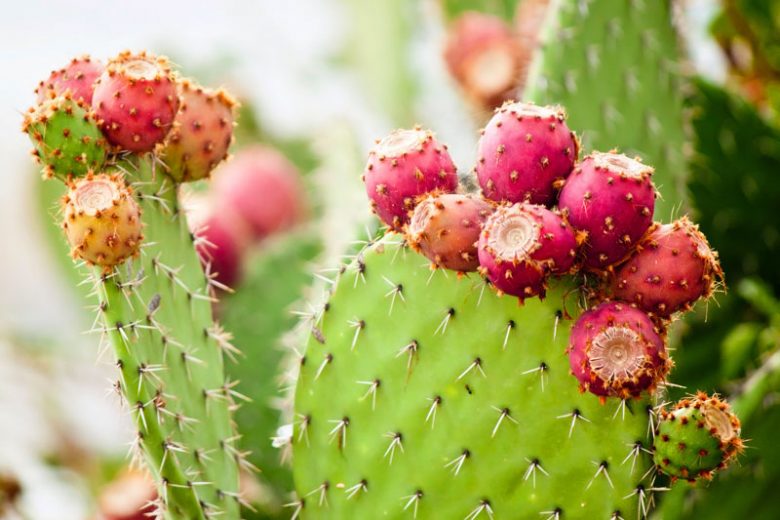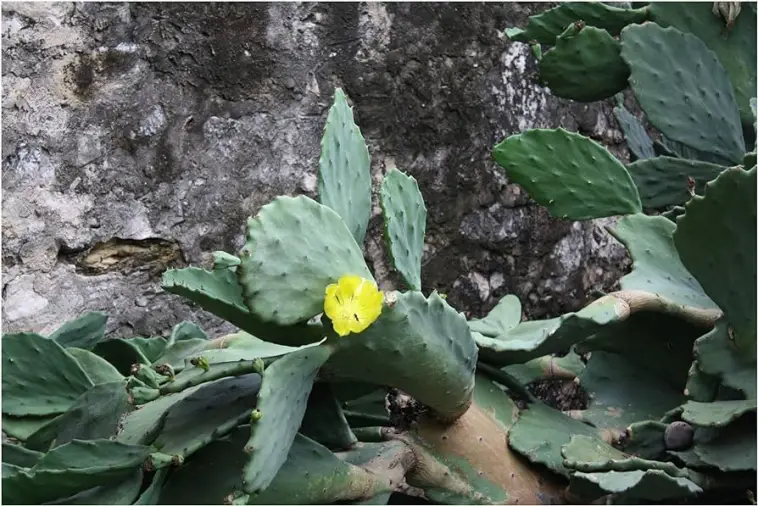Ensure proper sunlight and avoid overwatering cacti for thriving growth. Choose well-draining soil and containers with drainage holes.
Cacti gardening is a delightful endeavor for green thumbs looking for a low-maintenance yet exotic addition to their plant collection. These resilient plants hail from arid environments, demanding specific care to flourish indoors or outdoors. Understanding cacti preferences for sun exposure, watering schedules, soil composition, and container choices sets the foundation for a thriving cactus garden.
Cactus Gardening Tips: Your cactus’s health depends largely on mimicking its natural habitat, which means plenty of light, sparse watering, and nutrient-rich yet fast-draining soil. Choosing the right type of cactus, adhering to seasonal care variations, and being vigilant about pests and diseases also contribute to a vibrant cactus garden. Whether you’re an experienced gardener or a beginner, cacti offer an array of species to suit various aesthetic tastes and care abilities, making them ideal for anyone seeking to add a touch of desert beauty to their environment.
Table of Contents
:max_bytes(150000):strip_icc()/GettyImages-1161142427-2000-92a0fdc9a9104a808d0aaad22cb756fe.jpg)
Credit: www.southernliving.com
The Allure Of Cactus Gardening
Cacti captivate with their array of shapes and sizes, offering an exotic appeal to any garden. Small round globes, towering columns, and spiraled forms are some examples. Each species flaunts its unique silhouette, transforming spaces with their geometric beauty.
They bloom in stunning colors, with flowers ranging from bold reds and purples to soft pinks and whites. Cactus blooms often appear surreptitiously, adding a pop of color to your green collection. These unexpected blossoms bring joy to gardeners and enhance the plant’s intrigue.
Choosing The Right Cactus
Beginners may favor certain cactus varieties due to their resilience and versatility. The prickly pear and golden barrel are ideal for newcomers. These types provide gorgeous blooms and are less fussy about their environment. Look for cacti with healthy, vibrant spines, as these are usually in good condition.
Finding the right pot size is crucial for cactus health. A pot too large may hold extra moisture, which can harm the roots. A pot too small could restrict growth. The perfect pot should leave about an inch or two of space around the cactus. Ensure it has adequate drainage holes to prevent water buildup. A terracotta or clay pot is often recommended because it wicks away moisture effectively.
Prime Cactus Real Estate
Cacti thrive in bright, sunny spots indoors. South-facing windows are ideal to catch ample sunlight.
Choose airy rooms where air circulation is good. Cacti need fresh air to grow healthy.
Outdoor cacti enjoy partial shade in hot climates. Shield them from intense afternoon sun. Place them in areas with morning exposure.
During summer, give indoor cacti a ‘vacation’ outside. But remember to acclimate them slowly to prevent sunburn.
The Art Of Watering
Proper watering is crucial for cactus health. It’s all about balance. Deep, infrequent waterings are best. Ensure soil is completely dry before watering again. This method encourages strong root growth. Aim to water every 1-3 weeks in warm months, depending on your environment. Winter requires even less—perhaps once a month. Your cactus may need more frequent waterings if the air in your home is dry, or less often if the air is humid.
| Over-Watering | Consequences |
| Root Rot | Can kill the plant. |
| Fungus Growth | Leads to diseases. |
| Pests Attraction | Pests love wet soil. |
Soil And Drainage Essentials
Your cactus thrives with the right soil mix. Cacti require a mix that dries out quickly to prevent root rot. A commercial cactus mix is often best. Blend in sand or fine gravel to improve drainage.
To create optimum drainage, use terracotta pots. They wick away excess moisture. Make sure pots have a drainage hole at the bottom. You can add a layer of gravel at the pot’s base too.
| Soil Component | Benefit for Cactus |
|---|---|
| Commercial Cactus Mix | Premixed for good aeration and drainage |
| Sand/Fine Gravel | Improves soil structure and reduces wetness |

Credit: www.amazon.com
Sunny Delights And Light Requirements
Cacti need bright sunlight to flourish, but too much direct light can harm them. Placing your cactus in a spot where it gets morning sun and afternoon shade is ideal. This gives it enough light without the intense heat of midday.
To prevent sunburn, gradually introduce your cactus to brighter conditions over several weeks. This allows it to adapt without stress. Glass windows can amplify sunlight; consider a sheer curtain to diffuse intense rays.
For cacti that can’t handle high sun exposure, a well-lit room works well, too. Just make sure to position them close to the light source. Reflective surfaces can also help increase light availability without moving the cactus outdoors.
Feeding Your Spiky Friends
Cacti thrive with the correct nutrients. Specific cactus fertilizers are best. They have lower nitrogen content and enriched with phosphorus and potassium.
Feed your cacti in their growth period, usually from spring to early fall. Once a month is enough. In winter, stop fertilizing; cacti are dormant then.
Tackling Cactus Pests & Diseases
Protecting cacti from pests requires consistent attention. Spider mites and mealybugs are common enemies of these desert plants. Regular inspections help in early detection of such pests.
To prevent infestations, ensure good air circulation around your cacti. A mixture of water and mild soap can act as a preventive spray. Neem oil is also effective against pests.
If pests are present, remove them with a soft brush or cloth. In case of diseases, like fungal rot, reduce watering and improve drainage. Infected areas should be cut off immediately to prevent spread.
The Secrets Of Propagation
Propagation is exciting for any cactus enthusiast. Achieving success requires knowing two main methods: cutting and offsetting, and seeding. Let’s explore both.
To propagate from cuttings, select a healthy section of the cactus. Make sure the tool you use is clean to prevent infection. Cut the piece and let it dry. This forms a callus over the wound. After a few days, place the cutting in dry cactus-specific soil. It will develop roots and become a new plant.
Offsets are baby cacti that grow at the base of a mature plant. Gently twist these off and plant them in dry soil. They will root on their own and grow.
Seeding starts with filling a tray with cactus soil. Sprinkle the seeds over the soil and cover them lightly. Place the tray in a warm, well-lit area. Seeds need moisture, so cover the tray with plastic wrap to create humidity. Once the seeds sprout, remove the wrap and care for them just like mature cacti.

Credit: www.gardenia.net
Handling And Safety Measures
Protective gear is a must for handling cacti. Gloves must be thick to prevent spines from poking through. Eyes should be guarded with glasses. Long sleeves will protect your arms.
To safely repot a cactus, wrap it in a thick layer of newspaper or foam. This acts like a handle. Gently lift the cactus from its pot and place it in the new one filled with the proper soil mix. Press the soil down gently around the roots, being careful not to damage them.
Seasonal Cactus Care Routines
During summer, your cactus craves more attention. Water frequently but ensure the soil dries completely between soakings. Bright sunlight is crucial, yet too much can harm. Position plants where they’ll get ample morning sunshine.
Light shade during peak afternoon heat prevents burns. Use cactus fertilizer monthly for nutrients.
As winter sets in, cacti enter dormancy. Watering should decrease significantly. Ensure the environment is cool; around 50-55 degrees Fahrenheit is ideal. The goal is to mimic their natural desert chill period.
Do not fertilize during this time. Your cactus rests, preparing for spring growth. Gentle care ensures season-long health and vibrancy for your prickly friends.
The Aesthetic Of Cactus Arrangements
Creating a beautiful cactus display is all about balance and creativity. Begin by selecting a variety of shapes, sizes, and colors to make your composition stand out. Choose containers that complement the cacti’s natural beauty.
Small, shallow pots work well for individual cacti, while larger planters can hold intricate arrangements. Terrariums offer a unique view of cacti, often creating a miniature desert landscape. This glass enclosure showcases the plants from all angles, enhancing the overall aesthetic.
- Use succulent soil for proper drainage.
- Arrange cacti with space to grow.
- Contrast spiky textures with smooth ones.
- Add decorative stones or sand for a finishing touch.
Common Missteps To Avoid
Many cactus enthusiasts believe cacti thrive on neglect. This is a myth that can harm these plants. Cacti do require regular care and attention. One common mistake includes overwatering. Though they are desert dwellers, their roots need time to dry.
Another misconception is that cacti need scorching sunlight always. While they love light, too much can burn them. A balance of light and shade is ideal for most types. Lastly, not all cacti have the same needs. Research to provide the right soil mix and watering schedule for your specific species.
Joining The Cactus Community
Embarking on your cactus gardening journey? Take the first step by connecting with fellow enthusiasts. Forums and online groups are fantastic for exchanging tips and tricks. Beginners and experts alike share insights that can elevate your cactus game.
Don’t forget your neighborhood – local gardening clubs often embrace cactus lovers. It’s a chance to meet in person and maybe even swap plants. Don’t be shy, these communities are usually keen on helping newcomers.
Frequently Asked Questions On Cactus Gardening Tips
What Are The Tips For Growing Cactus?
Ensure cacti receive ample sunlight, ideally a sunny windowsill. Water them sparingly, allowing soil to dry completely between sessions. Choose well-draining cactus-specific soil. Fertilize during growing season with cactus-formulated nutrients. Repot as needed, allowing space for growth.
What Do Cactus Need To Thrive?
Cacti need bright sunlight, well-draining soil, infrequent watering, and warm temperatures to thrive.
How Often Should A Cactus Be Watered?
Water cacti every 1-3 weeks, allowing soil to dry completely between waterings. Adjust frequency based on temperature and season.
Where Is The Best Place To Put A Cactus?
Place a cactus on a sunny windowsill or an outdoor spot with bright light to ensure proper growth and health.
Conclusion
Embrace the joy of cactus gardening with these essential tips. Remember, less is often more when it comes to watering. Pick soil with good drainage, and locate your thorny friends where sunlight is ample. With the right conditions, your cactus can thrive, bringing a touch of the desert’s unique beauty to your space.
Happy gardening!
